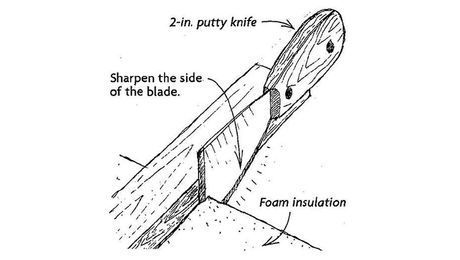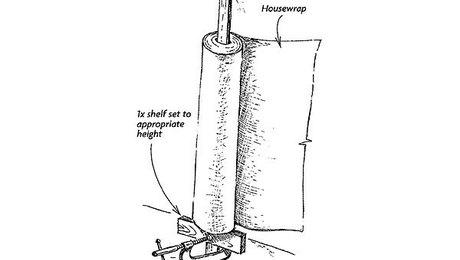Q:
We own a mid-1800s lake front cottage in upstate New York. The house is not occupied in the winter, and keeping the electric heat set at 50°F to prevent things from freezing ran up more than $1,000 in electric bills last season. Is it necessary to keep the building warm for those three months?
Jack Herrington, Bloomfield, NY
A:
Roe A. Osborn, a former senior editor at Fine Homebuilding, replies: My wife and I spent several years as caretakers of a remote island. One of our duties was shutting down the island houses after the owners left for the winter. None of the houses showed any ill effects from being unheated during the winter.
In fact, depending on electricity to keep a house from freezing might be a much more risky proposition. One good upstate New York blizzard could knock out the electricity for days, resulting in enough damage to make your heating bill seem like a bargain.
Here’s what to do to close down your house for winter. First, shut off any natural gas or propane that you might have coming into the house. If there is a valve where the gas enters the house, close it as well as the valves at any gas appliances such as stoves, space heaters, or water heaters.
Water freezes, so draining the plumbing system is the next step. Start by cutting the power to the water pump. Usually, the water tank is the lowest point in the plumbing system. Attach a hose to the drain valve at the bottom of the tank, run the free end outdoors (if it’s downhill) or to the basement sump well, and open the drain. Do the same with the water-heater tank if you have one. (If it’s an electric water heater, make sure the power is off before draining it.)
Next, open every faucet, including showers, and flush every toilet, holding down the handle until the tank empties completely. If there are any places where improperly pitched or looped supply lines won’t drain back completely, install an in-line drain. Any place water collects has the potential for a burst pipe.
Last, pour a cup or so of nontoxic antifreeze into every drain to keep the trap from freezing.
It’s not a bad idea to make a checklist of all the things to do as you close down your house for the winter, especially if the plumbing system has any quirks. When you turn on the systems in the spring, attack the list in reverse. Be prepared for possible problems, but they’re usually less of a headache than a $1,000 heating bill.
Fine Homebuilding Recommended Products
Fine Homebuilding receives a commission for items purchased through links on this site, including Amazon Associates and other affiliate advertising programs.

Musings of an Energy Nerd: Toward an Energy-Efficient Home

Get Your House Right: Architectural Elements to Use & Avoid

The New Carbon Architecture: Building to Cool the Climate

























